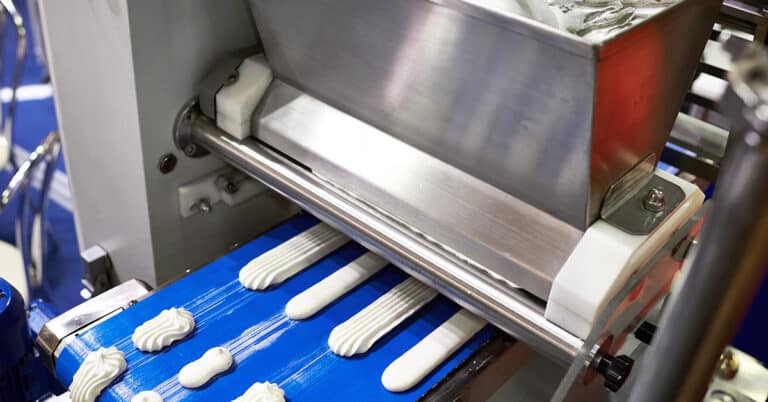Work sampling is an important statistical technique that companies use to measure their workforce or machine utilization. The technique focuses on randomly timed observations. At ATS, because of our extensive experience in maintenance and optimizing reliability, we view work sampling as a tool to eliminate inefficiencies and to better allocate labor.
Below, we’ll discuss work sampling in operations management, detailing its methodologies, benefits, and integration with lean manufacturing principles to enhance operational efficiency and support process improvement.
What is work sampling in manufacturing?
Manufacturers use the work sampling procedure to help them estimate how much time employees and machines spend on tasks, including producing items or providing services. Sampling can also provide data about when employees are idle or waiting for maintenance or instructions. The sampling process documents their activities.
Work sampling is relevant in modern manufacturing environments because it provides a better sense of worker and equipment productivity, as well as the cost of these activities or jobs. Instead of measuring all activity, it’s more efficient to take multiple samples and then extrapolate how much time tasks take in general. Companies focused on lean manufacturing depend on conducting accurate work sampling studies.
Random observations made during work sampling complement other study methods, such as time studies, which manufacturers typically conduct when studying repetitive activities by qualified workers to establish the average time needed to finish cyclical tasks.
Likewise, companies conduct related continuous improvement checks to help them understand how to make their operations leaner, such as by discovering bottlenecks or inefficiencies in their processes.
For another point of comparison, a time and motion study — which you conduct under controlled conditions — is designed to give you more detailed information about the time a person takes to complete tasks.
In contrast, work sampling uses random observation intervals to minimize observer bias. Randomness helps control against an observer making unconscious or conscious decisions about which machines or workers to study, and when. Over time, you obtain multiple representative samples and repeat the random sampling checks to develop a statistically valid view of the activities.
Manufacturers use work sampling studies rather than traditional time studies because they are a more cost-effective and less invasive approach to making informed decisions, with no need for the observer to follow a worker around all day. In industrial engineering companies, work sampling is a vital tool for process improvement.
Key focus areas for work sampling in manufacturing
Manufacturing aspects that can gain the most insight from a work sampling system include:
- Assembly lines
- Quality control
- Machine operation
- Maintenance tasks
You’ll want to analyze idle time versus active time with your work sampling initiative to help highlight opportunities for improvement.
- Equipment and machine utilization: Manufacturers must identify how frequently their machines are running, undergoing maintenance, or idling as they conduct data analysis from their work sampling study.
- Labor allocation: Use the work sampling method to determine how effective operators are at their tasks and identify the reasons for any downtime. Work sampling is invaluable when calculating the direct vs. indirect labor ratio in manufacturing facilities.
- Maintenance routines: In manufacturing settings, you’ll want to use work sampling to determine how often maintenance technicians are waiting for parts. When and how often do they transition from one task to another? How much time do they spend repairing machines?
Work sampling techniques and steps
The typical phases of a work sampling study include:
- Defining activities
- Planning the study’s observations (including randomization)
- Collecting data
- Analyzing the study’s results
Managers determine how often to make observations and what sample size to use according to how much time and how many resources they can devote to the test without otherwise hindering operations. Of course, they do need large, randomized samples to get a more accurate view of the general amount of time spent on tasks.
- Define activities and categories: Following the work sampling method, you break down the activities being studied into productive work, waiting, rework, and administrative tasks.
- Random interval scheduling: It’s best to use random interval scheduling to prevent an observer’s unconscious (or conscious) bias from interfering with collecting accurate data.
- Data collection and analysis: Manufacturers use spreadsheets or specialized software to aggregate their observations into meaningful metrics, such as how much time was spent by machines or humans in each category.
- Confidence levels and error margins: The larger the sample size, the higher the managers’ confidence level in the results of their work sampling activities.
Benefits and practical applications of work sampling
What immediate gains can you expect when doing work sampling? You can reduce labor costs, optimize machine usage and improve scheduling by understanding the time required for various tasks.
When you discover hidden inefficiencies, you can start saving money and boosting efficiency since you are freeing up labor hours toward more productive activity. The work sampling data gives you a more precise view of cycle times, which is instrumental in streamlining workflows.
How can results drive process optimization or layout changes? By identifying the primary causes of downtime, such as workers idling while waiting for instructions or maintenance/repairs, you can make informed decisions. This insight may prompt you to invest in predictive maintenance tools. Additionally, your organization will also discover how many unproductive tasks take up worker and machine time.
In a data-driven manufacturing environment, you can allocate resource planning more effectively. For example, managers use work sampling results to inform how they schedule worker shifts, define staff training needs, or which equipment investments to prioritize.
Integrating technology in work sampling
In the era of Internet of Things (IoT) devices, manufacturing facilities can leverage IoT sensors and automated logging to replace or at least augment their manual random observation methods. This is because IoT and wearable technology enable you to collect data continuously. And since the data is digital, you can use AI to help analyze the work sampling information much faster and more accurately. Data collection methods include:
- Electronic observations: Ongoing machine data collection will speed up your work sample efforts. Obtain real-time machine status logs (including information from your industrial maintenance sensors), digital time stamps, and operator input as registered by the sensing and recording equipment.
- Hybrid Approaches: Here, you combine manual checks (randomized) with data from sensors so that you further discover previously hidden variances and cross-verify the automated and manual results.
At ATS, we help organizations deploy advanced maintenance management solutions and reliability software to inform their sampling approach, to obtain even deeper insights into the work sampling data.
Challenges and pitfalls to avoid in work sampling
Be aware that observer bias, sampling errors, and poor definitions of the tasks can yield misleading data. To address these issues, you and your associates should clarify the definitions of each activity you intend to study.
Use random timing intervals and make sure you generate a sufficient number of observations to record enough data so that the sample gives you a good indication of activities in general. With too few data points, you can anticipate large error margins, which would invalidate your study’s conclusions.
How do managers handle observer bias or employee pushback? Employees may be wary about why they are subject to work sample studies. Managers should build trust by being transparent and explaining that the goal of sampling is to enhance the organization’s processes.
Companies prioritize work sampling because it’s a proven, cost-effective approach to optimizing manufacturing processes and change management tasks. When conducted with sufficiently large sample sizes at randomized intervals, sampling empowers you to highlight actual workflow patterns. Your managers will be able to make data-backed decisions instead of guessing or experimenting with their schedules and how they allocate machine and human resources.






